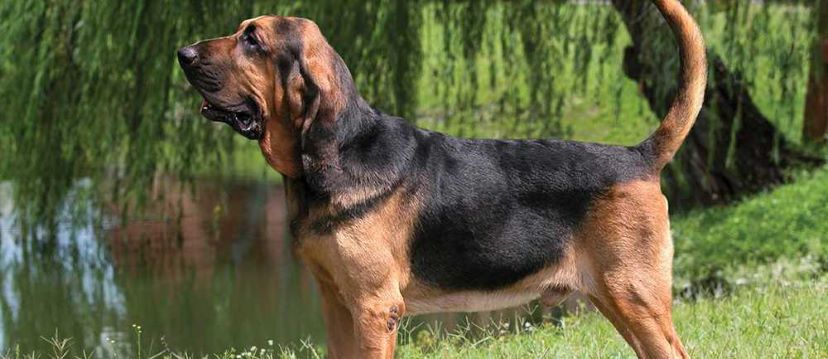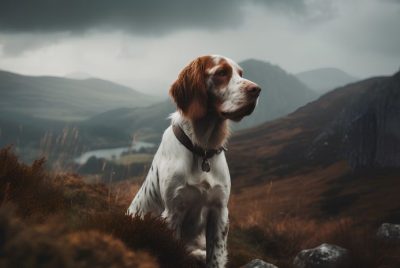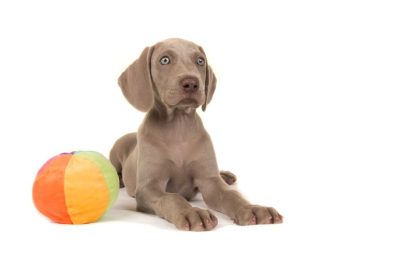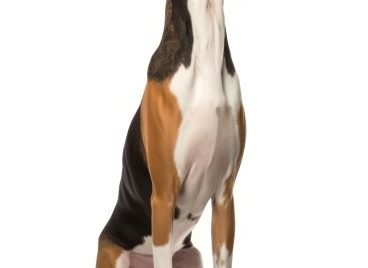Bloodhound Traits & Characteristics
Ah, the Bloodhound! The word itself paints a picture of a robust, droopy-eared detective dog, doesn’t it? As an avid dog enthusiast and advisor, I find the Bloodhound breed particularly fascinating. And in the next paragraphs, you’ll discover why.
Overview of the Bloodhound Breed
Originating from ancient times, Bloodhounds are celebrated for their tracking prowess, which is superior to any other breed.
History of the Bloodhound Breed
Going back in time, Bloodhounds were bred for hunting game and tracking people. The breed got its name not because of their tracking skills, but due to their ‘noble’ or ‘pure’ blood, as they were bred very carefully.
Physical Traits of the Bloodhound Breed
Sporting an adorable set of droopy eyes and ears, Bloodhounds are sizable, standing 23 to 27 inches tall at the shoulder. They possess a unique elastic skin and have powerful legs, embodying strength and endurance.
Unique Characteristics of the Bloodhound Breed
Apart from their distinctive appearance, Bloodhounds also boast some unique characteristics that set them apart.
Strong Sense of Smell
Did you know Bloodhounds have the most sensitive nose among canines? This trait is their claim to fame and an asset to police departments globally.
Persistence and Tenacity
Bloodhounds are synonymous with tenacity. They can follow a scent trail for hours, even days, displaying unparalleled persistence.
Affectionate Nature
Despite their imposing size, Bloodhounds are big softies, full of affection, particularly towards their human companions. They’re like gigantic teddy bears!
Behavioral Traits of the Bloodhound Breed
Now that we’ve covered the unique traits, let’s dive into the Bloodhound’s behavioral aspects.
Behavior with Family
Bloodhounds are family dogs. They enjoy the company of their human pack and are exceptionally gentle with children.
Behavior with Strangers
Although reserved with strangers initially, they quickly warm up, embodying the phrase ‘makes friends easily’.
Behavior with Other Pets
Usually, Bloodhounds get along well with other pets. However, their hunting instinct might kick in with smaller animals, requiring close supervision.
Training a Bloodhound
Training a Bloodhound can be both rewarding and challenging. Here’s why.
Obedience Training
Start obedience training early. Though they are intelligent, their stubborn streak can make training a bit of a challenge.
Exercise and Activities
Bloodhounds are energetic dogs. Regular exercise and mental stimulation are crucial to keep them healthy and happy.
Bloodhound Health and Care
As with all breeds, Bloodhounds have specific health and care needs.
Common Health Concerns
Bloodhounds are prone to specific health conditions such as hip dysplasia, ear infections, and eye issues. Regular check-ups are vital.
Dietary Needs
A balanced diet is crucial to maintain their overall health and cater to their high energy needs.
Grooming Needs
Despite their short coat, Bloodhounds require frequent grooming, especially around the face and ears, to avoid infections.
Conclusion
In essence, Bloodhounds are a remarkable breed. Their unique traits, coupled with their affectionate and friendly nature, make them wonderful pets. With the right care, training, and lots of love, a Bloodhound can indeed be man’s (or woman’s) best friend.
FAQs
- Are Bloodhounds good family dogs?
Yes, they are excellent family dogs due to their affectionate nature and gentleness with children. - Can Bloodhounds live in apartments?
Given their size and energy levels, they are better suited to homes with ample outdoor space. - How often should a Bloodhound be groomed?
Regular grooming, especially around the face and ears, is essential to avoid infections. - Are Bloodhounds easy to train?
While intelligent, they can be stubborn. Hence, early obedience training is advised. - What is the average lifespan of a Bloodhound?
The average lifespan of a Bloodhound is around 10-12 years.




